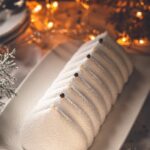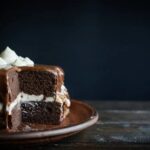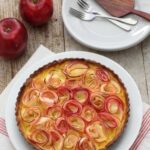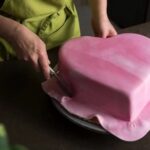Are you looking to elevate your cake decorating skills? Learn how to use icing sugar for cake decorating and take your creations to the next level. Icing sugar, also known as powdered sugar or confectioner’s sugar, is a versatile and essential ingredient in the world of baking and pastry arts. In this article, we will explore the fundamental aspects of using icing sugar for cake decorating, from understanding its basics to mastering professional-looking decorations.
To begin with, it is crucial to have a solid grasp of the basics when working with icing sugar. This includes familiarizing yourself with the different types of icing sugar available, as well as essential tools and equipment needed for effective cake decorating. Understanding these fundamentals will set a strong foundation for creating stunning and intricate designs on your cakes.
Once you have a good understanding of the basics, we will provide you with a step-by-step guide to making icing sugar decorations. Whether you are a beginner or an experienced baker, this comprehensive guide will walk you through the process of using icing sugar to create beautiful and edible masterpieces on your cakes. Additionally, we will share valuable tips and creative techniques that will help you achieve professional-looking cake decorations with ease.
Types of Icing Sugar
When it comes to cake decorating, using the right type of icing sugar can make a big difference in the final result. There are several types of icing sugar available, each with its own unique characteristics and uses. Understanding these different options will help you choose the best one for your specific cake decorating needs.
One popular type of icing sugar is confectioner’s sugar, also known as powdered sugar. This finely ground sugar is mixed with a small amount of cornstarch to prevent caking and is commonly used for making frosting, glazes, and decorative icings. Its fine texture makes it ideal for achieving smooth and glossy finishes on cakes and other baked goods.
Another type of icing sugar that is commonly used for cake decorating is fondant. Fondant is a pliable sugar paste that can be rolled out into thin sheets and draped over cakes to create a smooth, sleek surface. It can also be shaped and molded into intricate decorations such as flowers, ribbons, and figurines. Fondant comes in various colors and flavors, making it a versatile option for adding visual appeal to cakes.
In addition to confectioner’s sugar and fondant, there are specialty icing sugars available that are specifically formulated for certain types of cake decorating techniques. For example, royal icing sugar is designed for making delicate piped decorations and intricate designs that require a stiff consistency and quick drying time. Knowing the different types of icing sugars available will give you the flexibility to experiment with various decorating methods and achieve professional-looking results.
| Type of Icing Sugar | Main Uses |
|---|---|
| Confectioner’s Sugar (Powdered Sugar) | Making frosting, glazes, decorative icings; achieving smooth finishes |
| Fondant | Creating smooth cake surfaces; shaping into decorations such as flowers or figures |
| Royal Icing Sugar | Making delicate piped decorations; creating intricate designs with quick drying time |
Tools and Equipment Needed for Using Icing Sugar
When it comes to using icing sugar for cake decorating, having the right tools and equipment is essential. Whether you are a beginner or an experienced baker, having the proper supplies will make your decorating process much smoother and more enjoyable. Here are some essential tools and equipment you will need:
- Offset spatula: This tool is perfect for spreading icing evenly on the surface of the cake and creating smooth textures.
- Piping bags and tips: These are essential for creating intricate designs and adding decorative elements to your cakes.
- Turntable: A revolving cake stand will make it easier to frost and decorate your cakes from all angles.
- Decorating combs or scrapers: These are great for creating textured designs on the sides of your cakes.
In addition to these basic tools, there are some other items that can be helpful when using icing sugar for cake decorating. These include:
- Stencil sets: Stencils can be used with icing sugar to create patterns and designs on the surface of the cake.
- Food coloring: Having a variety of food colors on hand will allow you to get creative with your decorations.
- Edible glitter or luster dust: These add a touch of sparkle and elegance to your cake decorations.
With these tools and equipment in your arsenal, you’ll be well-prepared to take on any cake decorating project using icing sugar. Whether you’re aiming for a simple, classic look or something more elaborate and artistic, having the right supplies will help you achieve professional-quality results.
Remember that practice makes perfect when it comes to cake decorating with icing sugar. Experiment with different techniques and designs to find what works best for you, and don’t be afraid to get creative. With the right tools and a little bit of patience, you can create stunning decorations that will impress your friends and family.
Step-by-Step Guide to Making Icing Sugar Decorations
Icing sugar, also known as powdered sugar or confectioner’s sugar, is a staple ingredient in cake decorating. Whether you’re a baking enthusiast or a professional pastry chef, learning how to use icing sugar for cake decorating can take your creations to the next level. In this section, we will provide you with a step-by-step guide to making beautiful icing sugar decorations for your cakes.
To get started with using icing sugar for cake decorating, you will need the following tools and equipment:
- Sifter: To ensure that your icing sugar is free of lumps and ready for decorating.
- Piping bags: Essential for piping intricate designs and decorations onto your cakes.
- Piping tips: Different tips can create various shapes and textures, allowing for endless possibilities in decoration.
- Toothpicks or small paintbrushes: Useful for adding fine details to your icing sugar decorations.
Now that you have gathered your tools and equipment, it’s time to start making your icing sugar decorations. Here’s a simple step-by-step guide:
- Sift the icing sugar to remove any lumps and achieve a smooth texture.
- Prepare the piping bag with the desired piping tip and fill it with the sifted icing sugar.
- Gently squeeze the piping bag to release the icing sugar onto your cake, creating the desired pattern or design.
By following these steps, you can easily create intricate designs such as flowers, borders, or written messages on your cakes using icing sugar. Experiment with different piping tips and techniques to discover what works best for your cake decorating style. With practice and patience, you’ll be able to master the art of using icing sugar for stunning cake decorations.
Tips for Achieving Professional-Looking Cake Decorations With Icing Sugar
Achieving professional-looking cake decorations with icing sugar doesn’t have to be intimidating. With the right techniques and a little practice, you can elevate your cake decorating skills to the next level. Whether you’re a beginner or an experienced baker, these tips will help you create stunning and impressive designs that will wow your friends and family.
First and foremost, it’s important to make sure that you have the right consistency of icing sugar for decorating. If the icing is too runny, your designs may not hold their shape, while if it’s too stiff, it can be difficult to work with.
The key is to find the perfect balance by adding small amounts of liquid (such as water or milk) until you achieve the desired texture. This will ensure that your decorations come out smooth and flawless.
Another important tip for achieving professional-looking cake decorations with icing sugar is to invest in quality tools and equipment. Piping bags with different tips, offset spatulas, turntables, and icing smoothers are just a few examples of items that can make a huge difference in the outcome of your decorations. Having the right tools at your disposal can make the process easier and more enjoyable.
Furthermore, don’t underestimate the power of practice when it comes to using icing sugar for cake decorating. Experiment with different techniques, such as piping roses, creating intricate patterns, or practicing writing with icing. The more you practice, the more confident you’ll become in your abilities, and soon enough you’ll be creating professional-looking cake decorations that rival those made by bakery professionals.
| Tip | Importance |
|---|---|
| Consistency of icing sugar | Ensures smooth and flawless decorations |
| Quality tools and equipment | Makes the process easier and more enjoyable |
| Practice | Builds confidence and skill in cake decorating |
Creative Techniques for Using Icing Sugar in Cake Decorating
Stenciling and Dusting
One creative technique for using icing sugar in cake decorating is stenciling and dusting. This involves placing a stencil over the surface of the cake and then lightly dusting icing sugar over it to create a delicate design. This technique can be used to add intricate patterns, images, or even just a touch of texture to your cake decorations. It’s a simple yet effective way to elevate the look of your cakes and make them stand out.
Embossing and Piping
Another creative technique is embossing and piping with icing sugar. Embossing involves using special embossing tools or molds to create raised designs on the surface of the cake, which can then be dusted with icing sugar for added emphasis. Piping, on the other hand, involves using a piping bag to create intricate patterns or designs with icing sugar directly onto the cake. Both techniques give you greater control over the design and allow for more personalized and unique cake decorations.
Sugar Lace and Filigree
For those looking for an elegant and sophisticated touch, consider using icing sugar to create sugar lace or filigree decorations. Sugar lace can be made by spreading lace-patterned silicone mats with royal icing, letting it dry, and then carefully peeling it off to use as delicate decorations on cakes.
Filigree involves creating intricate lattice-like designs with icing sugar, which can be used as borders or focal points on cakes. These techniques require precision and patience but can result in stunning, high-end cake decorations.
By incorporating these creative techniques into your cake decorating repertoire, you can take your creations to the next level and impress your friends and family with beautifully decorated homemade cakes. Whether you’re a beginner or an experienced baker, experimenting with different ways of using icing sugar will open up a world of possibilities for making visually stunning desserts.
Remember that practice makes perfect when it comes to mastering these techniques, so don’t be discouraged if your first attempts are not flawless. With time and patience, you’ll soon become proficient at using icing sugar in creative ways to decorate your cakes like a pro.
Troubleshooting Common Issues When Decorating With Icing Sugar
When it comes to decorating cakes with icing sugar, there can be some common issues that arise. However, with the right knowledge and techniques, these problems can easily be resolved. Here are some troubleshooting tips for common issues when decorating with icing sugar.
Issue: Icing Sugar Clumping
One common issue when using icing sugar for cake decorating is clumping. This can happen when the icing sugar absorbs moisture from the air or from the cake itself. To prevent this, make sure to sift your icing sugar before using it. Sifting will help to break up any clumps and create a smooth, even consistency for your decorations. Additionally, try to work in a drier environment and store your icing sugar in an airtight container to prevent clumping.
Issue: Icing Sugar Not Sticking
Another issue that decorators may encounter is icing sugar not sticking to the cake or decorations properly. This can be frustrating, especially when trying to create intricate designs. One solution to this problem is to lightly mist the surface of the cake with water before applying the icing sugar. The moisture will help the icing sugar adhere to the cake more effectively. Just be careful not to use too much water, as this can cause the icing sugar to dissolve.
Issue: Icing Sugar Melting or Dissolving
Sometimes, decorators may find that their icing sugar decorations are melting or dissolving on the cake due to excess moisture. To avoid this issue, make sure your cake is completely cooled before decorating with icing sugar. Additionally, consider using less liquid in your frosting or other decorative elements on the cake in order to minimize excess moisture.
By understanding how to troubleshoot common issues when using icing sugar for cake decorating, decorators can confidently tackle any challenges that may arise and create stunning and professional-looking designs on their cakes. With these troubleshooting tips in mind, you’ll be well-equipped to handle any potential obstacles and achieve beautiful results with your icing sugar decorations.
Conclusion
In conclusion, icing sugar is a versatile and essential ingredient for cake decorating. Whether you are a beginner or an experienced baker, understanding the basics and types of icing sugar available is crucial to achieving professional-looking cake decorations. With the right tools and equipment, such as piping bags and tips, stencils, and molds, you can unleash your creativity and make stunning icing sugar decorations for your cakes.
By following a step-by-step guide and utilizing creative techniques, such as making intricate designs and creating three-dimensional figures with icing sugar, you can elevate the aesthetic appeal of your cakes. Experimenting with different colors of icing sugar, adding edible glitter or pearls, and using edible food color spray are also great ways to add visual interest to your cake decorations.
However, it’s important to be aware of common issues that may arise when using icing sugar for cake decorating, such as clogging in the piping bag or the icing not holding its shape. By troubleshooting these problems and learning from any mistakes made along the way, you can improve your skills and achieve even better results in your future cake decorating projects using icing sugar.
Frequently Asked Questions
Can You Use Icing Sugar to Decorate a Cake?
Yes, icing sugar can be used to decorate a cake. It adds a sweet and decorative touch to the cake’s appearance, making it visually appealing for serving.
How Do You Dust a Cake With Icing Sugar?
Dusting a cake with icing sugar involves using a fine-mesh sieve or shaker to evenly sprinkle the sugar on top of the cake. This technique adds a delicate and professional-looking finish to the dessert.
Do You Put Powdered Sugar on Warm or Cool Cake?
It is best to dust powdered sugar on a cool cake rather than a warm one. Sprinkling it on a warm cake can cause the sugar to quickly dissolve and be absorbed, resulting in a less noticeable decorative effect.

Welcome to my blog about home and family. This blog is a place where I will share my thoughts, ideas, and experiences related to these important topics. I am a stay-at-home mom with two young children. I hope you enjoy reading it! and may find some helpful tips and ideas that will make your home and family life even better!





